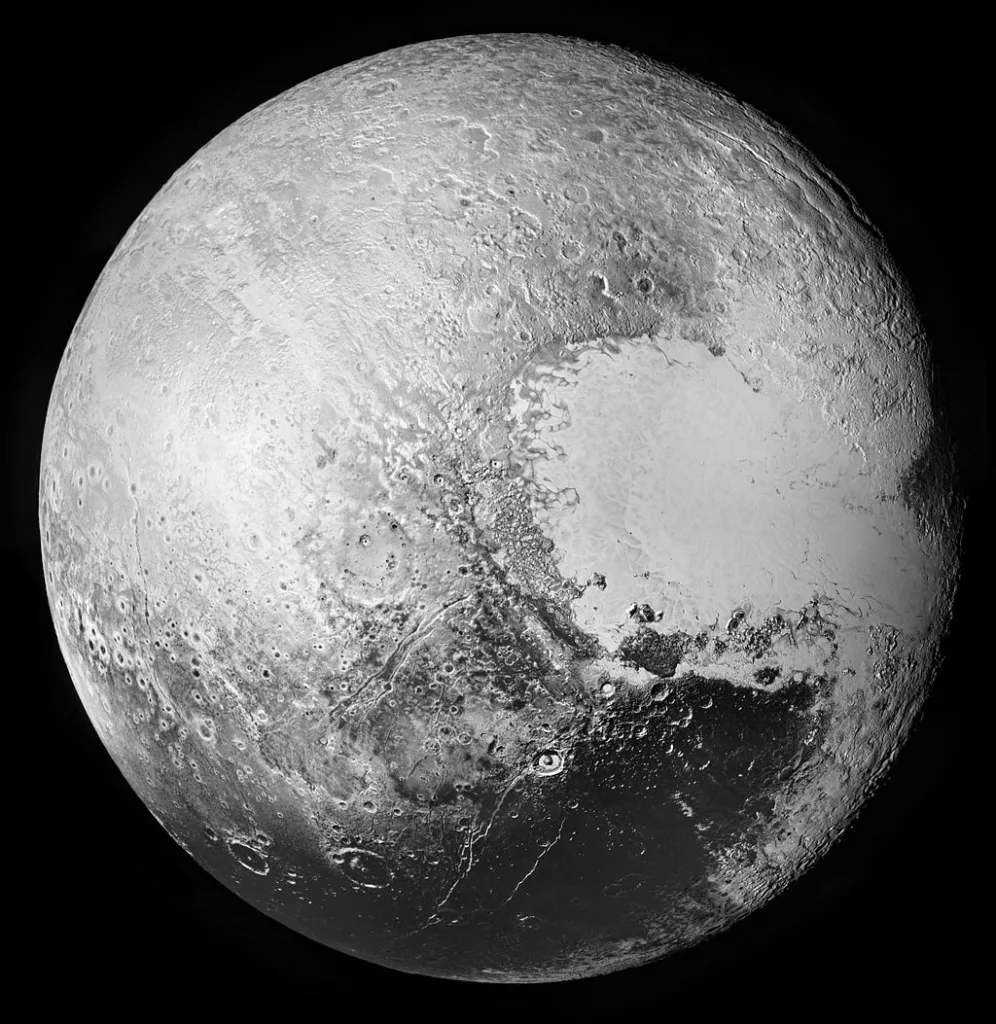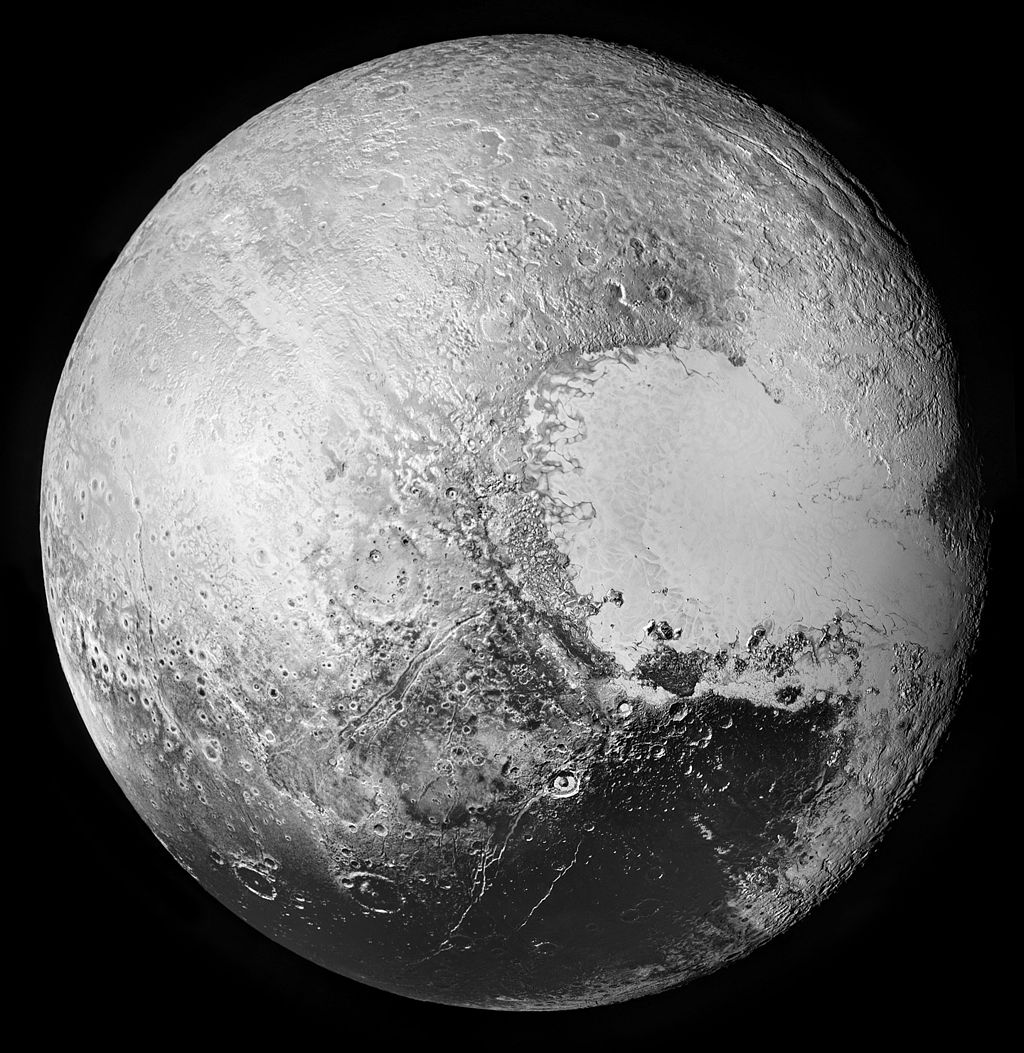What Color is Pluto: In 2015, NASA’s New Horizons spacecraft captured a high-resolution, enhanced color view of Pluto. This image, created from blue, red, and infrared images, showcases a wide range of subtle colors on Pluto’s surface, including pale blues, yellows, oranges, and deep reds. These colors are tied to distinct landforms, revealing a complex geological and climatological history that scientists are still deciphering. The image provides exceptional detail, down to 0.8 miles (1.3 kilometers), encouraging viewers to zoom in for a closer look.
This natural-color image is considered the most precise representation of Pluto and was produced through meticulous calibration of data collected by New Horizons’ Multispectral Visible Imaging Camera (MVIC). These refinements aim to approximate colors as perceived by the human eye, bringing us closer to Pluto’s “true colors” during the spacecraft’s encounter.
Taken on July 14, 2015, as New Horizons approached Pluto from a distance of 22,025 miles (35,445 kilometers), this single-color MVIC scan solely represents Pluto’s surface without additional data from other instruments. It distinctly showcases features such as Pluto’s bright, nitrogen-and-methane-rich “heart,” known as Sputnik Planitia.
Table of Contents
Pluto Color, Brightness and Contrast
Pluto’s surface composition is predominantly solid nitrogen, making up over 98% of its surface, with small traces of methane and carbon monoxide. Interestingly, the side of Pluto facing its largest moon, Charon, contains more solid methane, while the opposite side has higher concentrations of nitrogen and solid carbon monoxide. The distribution of these volatile ices is believed to be influenced by the seasons and factors such as solar exposure and topography rather than subsurface processes. Also Read about Pluto Time: What is it? Discover Your Cosmic Moment Now!

Observations using the Hubble Space Telescope, Pluto’s light variations, and periodic changes in its infrared spectra have unveiled a highly diverse surface. Pluto exhibits significant disparities in both brightness and color, with albedos ranging between 0.49 and 0.66. This remarkable range in surface properties makes Pluto one of the most contrasting celestial bodies in the Solar System, akin to Saturn’s moon Iapetus. Its color palette shifts from charcoal black to dark orange and even white, resembling Io but with a slightly more orange hue and notably less red than Mars.
Data from the New Horizons mission suggest varying surface ages across Pluto. It features ancient, dark, mountainous regions like Cthulhu, alongside the bright, flat, and nearly crater-free Sputnik Planitia. Additionally, Pluto showcases terrains of intermediate age and color.
Pluto Color Changes over Time
Over time, Pluto’s surface has undergone noticeable changes. Between 1994 and 2003, the northern polar region brightened while the southern hemisphere darkened. Furthermore, Pluto’s overall redness significantly increased from 2000 to 2002. These rapid transformations are likely associated with the seasonal condensation and sublimation of parts of Pluto’s atmosphere, intensified by its extreme axial tilt and highly eccentric orbit. Read more on Wikipedia about Pluto Geology. Find Your Pluto Time Based on Your Zip Code | Pluto Light Calculator | Pluto Darkness Calculator | Pluto Hour Calculator
What Color is Pluto and How Pluto Gets it Colour
Pluto’s coloration is primarily reddish-brown, and this color is attributed to the presence of complex organic molecules known as tholins on its surface. Tholins are formed through a process called irradiation, which occurs when solar ultraviolet and cosmic rays interact with simpler compounds in Pluto’s atmosphere, primarily methane and nitrogen. Here’s a breakdown of why Pluto has these colors:
Formation of Tholins: Tholins are created through a series of chemical reactions that start with ultraviolet light breaking down methane and nitrogen in Pluto’s atmosphere. These fragments then recombine to form more complex molecules. Also Read: The Curious Case of Planets That Spin the Wrong Way
Complex Organic Compounds: Tholins are large, complex organic molecules with a reddish-brown color. They are known for their reddish hues and have been observed on other celestial bodies as well.
Settling on the Surface: These tholins eventually settle onto Pluto’s surface, covering it in a layer of reddish material. Over time, this accumulation gives Pluto its characteristic coloration.
Variability in Color: The exact color of Pluto’s surface can vary across its different regions due to variations in the distribution of tholins and other surface ices.
See reach colors of Pluto on NASA website . Other NASA Resources on Pluto Color


